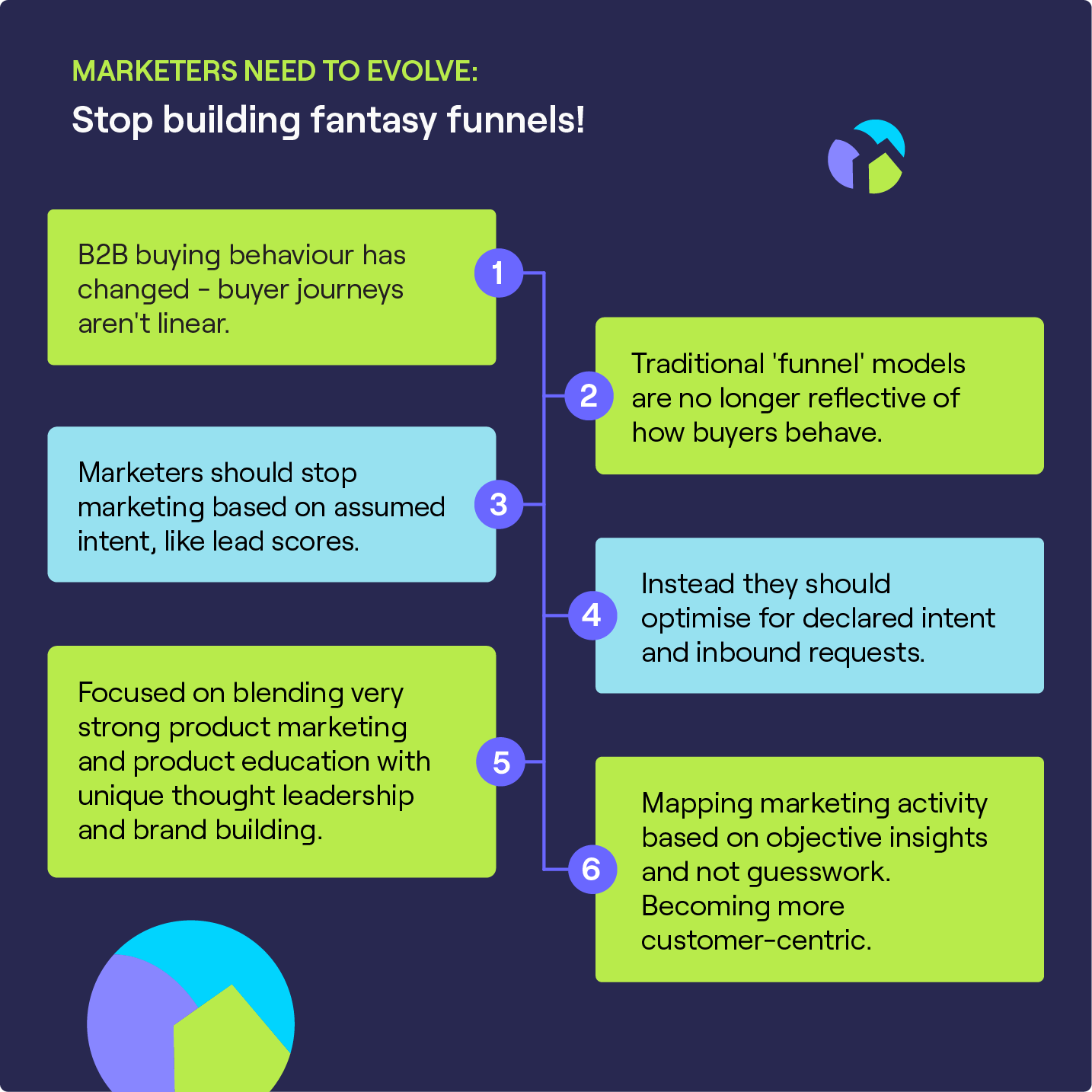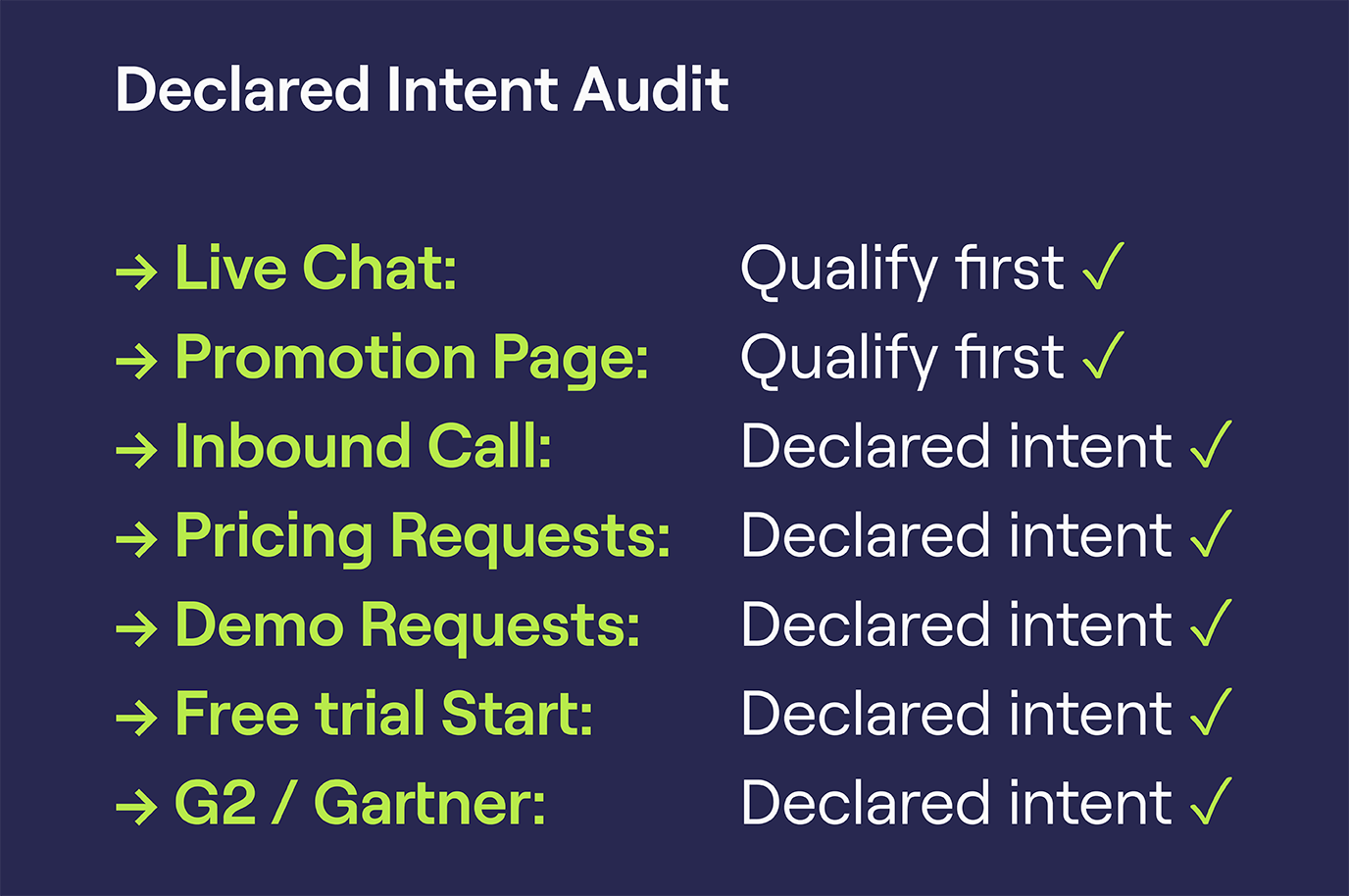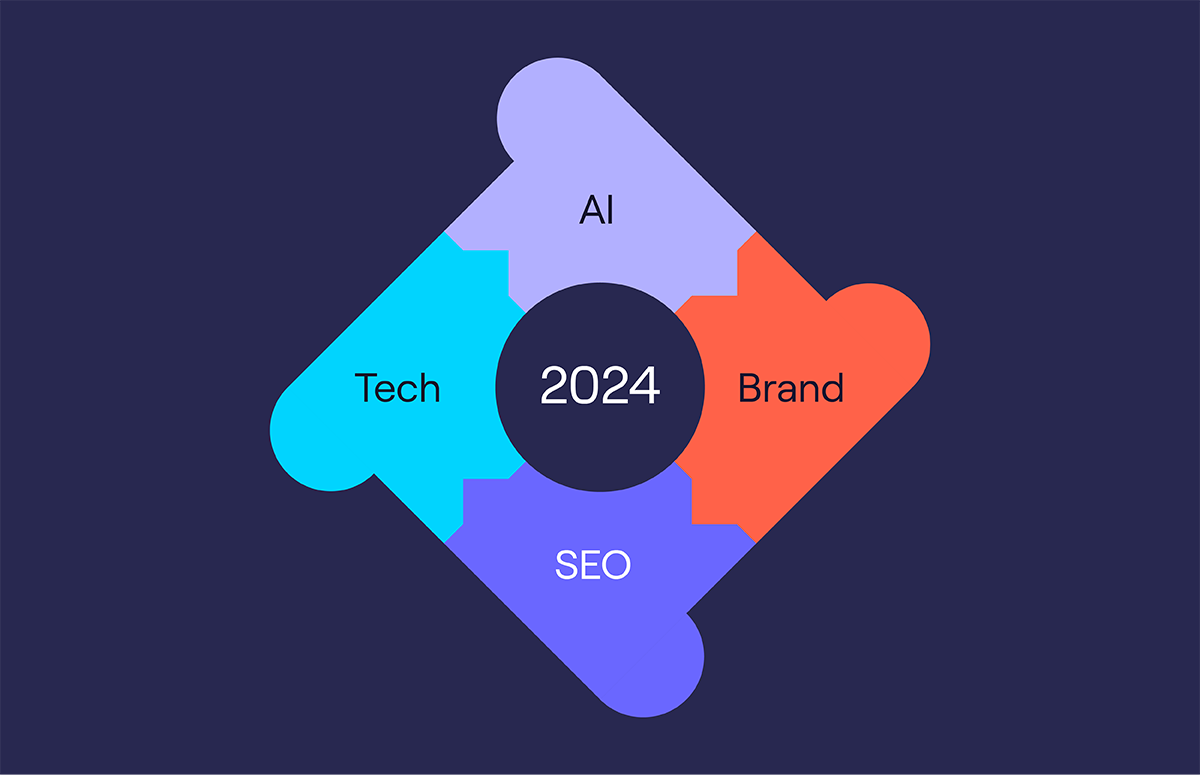Why the SaaS Marketing Funnel Doesn’t Work
What's on this page:
As much as we would love, as marketers, for buyers to go through a nice neat funnel - that’s just not the reality.
Buyers aren’t sitting at home waiting for your next nurture email or social post, moving themselves to the next step in the process.
Basing our marketing activity around funnels doesn’t help us reach the modern buyer in a meaningful way. Because:
- The buyer journey isn’t linear.
- Marketing reliant on assumed intent doesn’t work.
- Declared intent always trumps assumed intent.
The AIDA model is outdated
There are several different funnel models that B2B marketers use, although they generally look something like this:
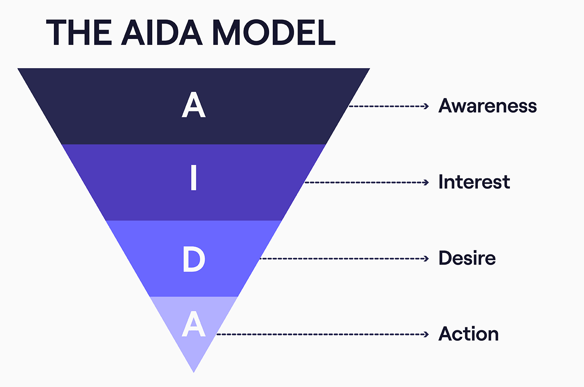
Most marketers are familiar with the AIDA model, which takes buyers through the Awareness, Interest, Desire and Action stages.
There are positives to having a funnel like this as a concept. Such as giving some structure for how marketers consider what makes buyers engage at each stage.
But this model suggests there’s a one-size fits all journey with step-by-step activities mapped to it. It assumes a singular set of rational choices taking buyers from awareness through to action.
And we know from the way we each buy individually that most of the time, we don’t follow this prescriptive process.
Instead, our buyer journey looks a little more like this image below…
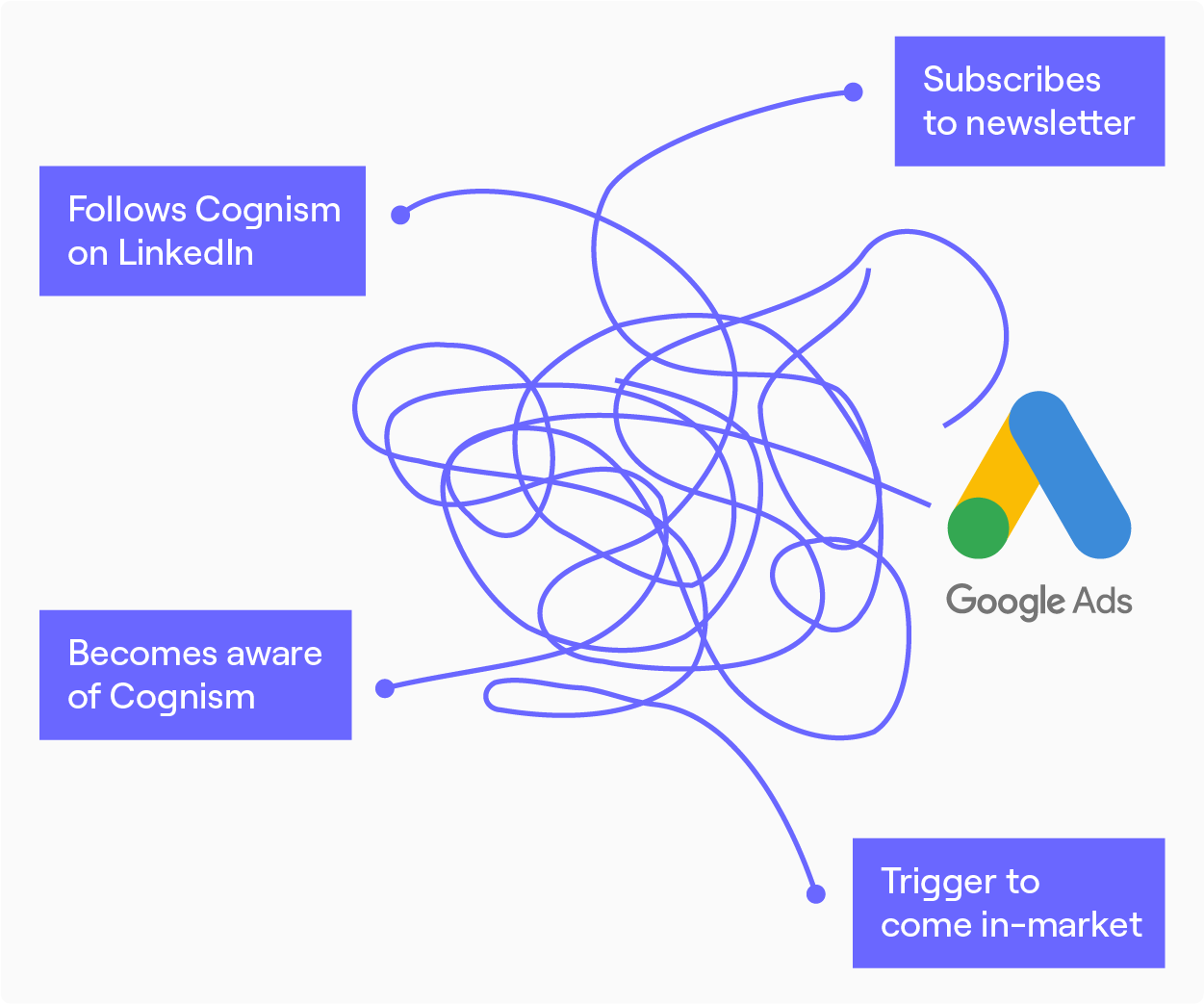
Just because we’ve opened an email or downloaded an eBook doesn’t mean we’ve moved to the ‘next phase’ in the marketing funnel.
Ads and content don’t move buyers from out of market to “in market.” Buyers move themselves in-market when something happens in their business that requires them to find a solution.
By sticking to this outdated model, we miss out on researching our actual buyers today and what they need to make informed purchasing decisions.
What should we be doing instead?
Instead of looking at our buyer journey through awareness, interest, desire and action, we can design our marketing activities to get customers excited about products and services without trying to explicitly sell to them.
In other words, demand generation.
You can pull people into your orbit with value-led content, helping them educate themselves on their industry and solve problems in similar categories to your product.
At Cognism, we call these our ‘value loops’, which can include:
- Newsletters.
- Podcasts.
- Organic social.
- YouTube.
- Live events.
Essentially, anywhere that our ICP can enter the Cognism world and continuously receive value from our “always on” content engine.
For example, at Cognism, our newsletter isn’t trying to sell to our audience. We aren’t trying to stimulate any immediate purchases. We aren’t assuming any ‘stage of the funnel’ that our readers might be at.
We simply deliver value-led content in feed, aiming for each reader to be able to take away an actionable lesson they can apply to their work that week.
We try to run it like a personal brand creator would.
We want readers to continue coming back to our newsletter and engaging with the content. Because then we are top of mind for these readers.
Demand generation is a long-term, education-focused marketing strategy that prioritises reaching and engaging “out of market” buyers.
The idea is if you do this process well - your customers will come inbound to you. You know when they’re ready to talk to your sales team, because they tell you.
How do you map content - if not to a funnel?
We believe it makes more sense to reflect the intent stages that a buyer might go through.
In other words, producing content that serves both those who are in-market already and those who are out-of-market but could become future customers later on.
It breaks down like this:
In-market buyer content
Split your in-market demand capture content into three.
- Demand capture - Paid search and affiliates.
- Demand capture - Pricing page and demo requests.
- Demand capture - SEO strategy.
This content is for those in-market buyers who are already solution aware. They, to some extent, know what they’re looking for.
The idea is then to push these in-market buyers to the parts of your website designed for demand capture. Using paid search, organic search and affiliates to encourage people to visit your pricing or demo request pages.
Providing them with the information that might sway their decision towards your product over another. Also offering you the opportunity to glean a level of intent.
Out-of-market buyer content
Then you have a further two categories of content for those out-of-market buyers who are not actively buying right now.
These out-of-market buyers might be aware they have a problem that your product solves, or they might be completely unaware at this stage.
Your content for these audiences should be geared towards helping them learn about and explore topics around your product.
Split your educational content into:
1. Education and exploratory - Main website pages
- Products you offer.
- Use cases you solve.
- Features.
- Customers and testimonials.
- How it works.
- Integrations.
2. Education and exploratory - Blog and resources
Most of your content planning should happen here - and where possible, it should be aligned to a topic’s business potential.
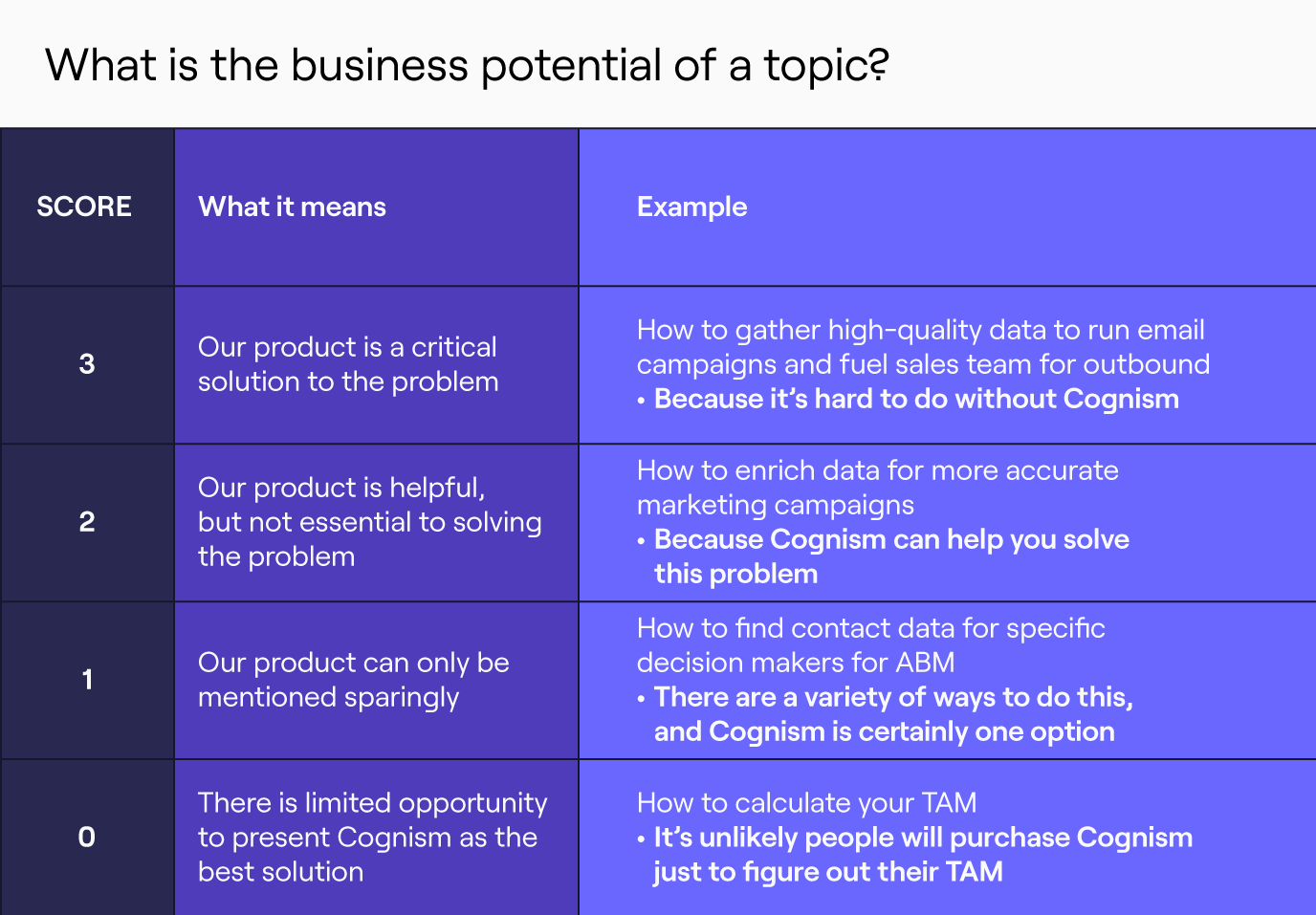
At Cognism, we’ve redefined our content strategy within the educational and exploratory categories with the Easy Mode framework.
By creating a strong narrative and firm points of view, we have fuelled our media machine with aligned messaging across each channel.
The framework helped us to define what constitutes good content, dig deeper into the purpose of our content and provided us with an action plan for producing content that makes a difference to business objectives.
Your content should also consider the various reasons someone might visit your site.
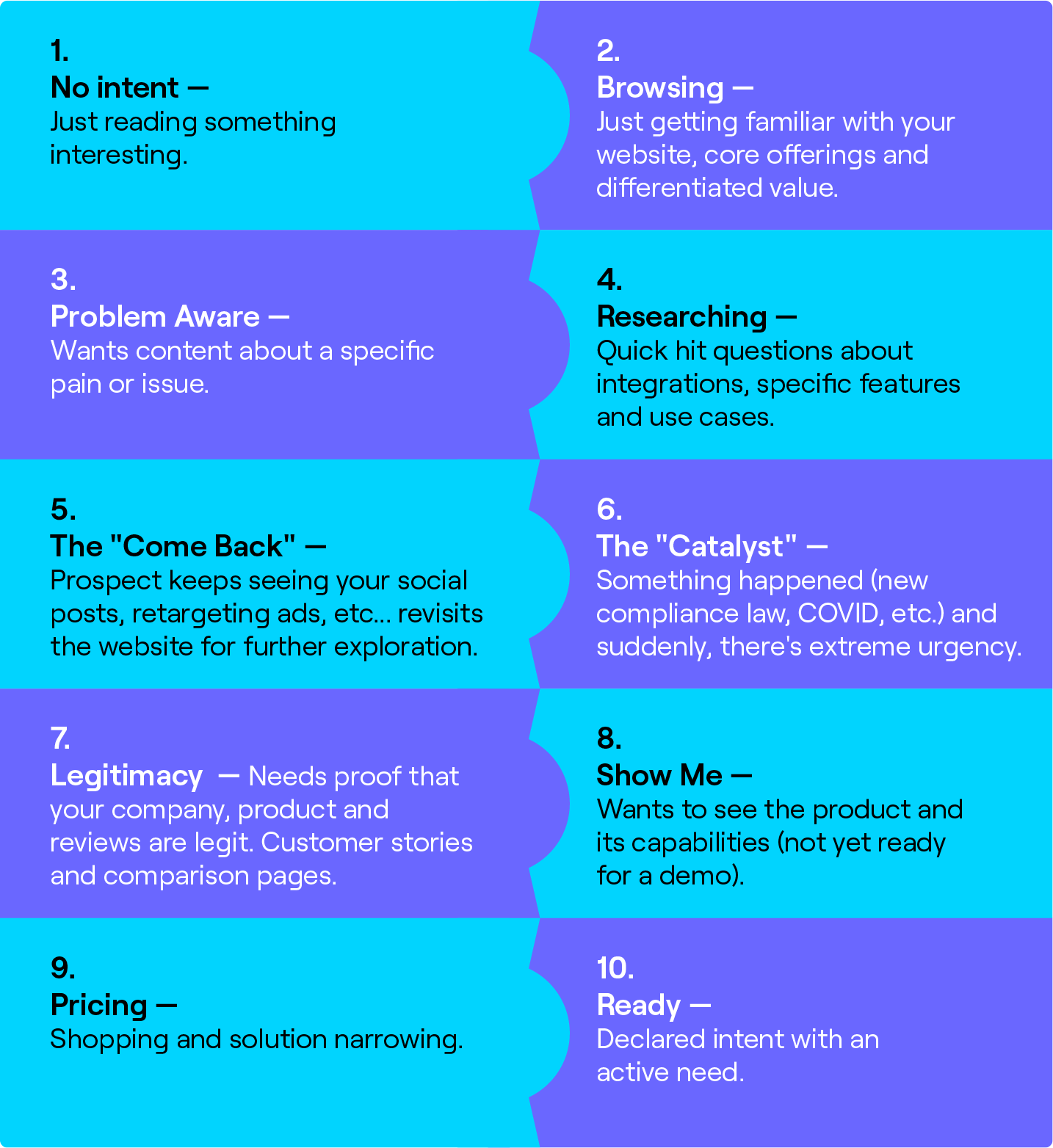
And map the CTAs accordingly.
Gaetano DiNardi, Cognism’s Growth Advisor, explains:
“B2B marketers tend to focus on “get a demo” and “talk to sales” — yet, this represents the smallest number of website visitors.”
“Most B2B websites only have one option — get a demo or nothing. Then, marketers claim the website has a poor conversion rate.”
“But it’s not the website. You need a better offer. That’s it. Start with the offer.”
So, the question really becomes... How do we better engage with all this exploratory traffic?
CTAs should ideally be mapped according to content type.
- Long-form, pillar or guide → Secondary conversion, e.g. get them into your value loops:
- Subscribe to podcast
- Subscribe to newsletter
- Subscribe to YouTube
- All types of nurturing channels
- Long-tail, listicle style:
- Classic sales CTAs
- Social proof - links to case studies
- Comparisons and alternatives → Book a demo, talk to sales.
Should product and social proof be for more than just ‘BOFU’ audiences?
The short answer here is - yes!
Just because your audience is not in-market to buy doesn’t mean you can’t tailor your product and social proof content to help make them more solution aware.
And if you want to make a great first impression on someone checking out your website for the first time, social proof can go a long way in easing their mind that you’re a legitimate company that can deliver real results.
Here are some great examples of B2B companies doing this:
Marketing reliant on assumed intent doesn’t work
What we take as ‘signs’ that a person is interested rarely corresponds to reality.
For example, someone in your ICP downloads a piece of content about the top 10 B2B marketing trends for 2023. Just because someone is interested in this topic doesn’t mean they intend to buy from you.
Yet often these ‘leads’ are now labelled as MQLs and sent over to sales to call.
While technology can be a blessing, it can equally be a curse when used incorrectly or relied upon too heavily. Unfortunately, tech isn’t the be-all and end-all and can sometimes give you a one-dimensional view of your buyer.
Often this is the case with lead scoring software. Buyers are more than their actions tracked by software!
By looking at intent in this way, you’re essentially triggering activity with guesses.
How to audit for declared intent
So you’ve decided to optimise for declared intent - what do you do?
Gaetano DiNardi introduced the idea of a ‘Declared Intent Audit’ as ‘the ultimate way to get sales and marketing on the same page’.
This exercise is designed to get sales and marketing looking at their current processes and definitions of ‘funnel stages’ versus where they want to be. Moving from a seller-centric state to a buyer-centric state.
Both teams should evaluate every conversion point on the website and determine:
- After conversion, what does the buyer expect to happen next? Are we currently directing them to somewhere else?
- After conversion, who do they expect to hear from? How long should it take?
- Does our CTA button language accurately reflect what will happen next?
- What additional qualification or discovery is needed?
- Reality check:
- Are we treating the buyer according to their expectations?
- Are we incorrectly classifying assumed intent sources for declared intent?
- Is sales wasting time talking to large volumes of unqualified people?
- Is sales connecting with too many people who just want a quick hit answer that could have been answered on live chat?
- Is sales connecting with too many people who just want a quick hit answer regarding a feature or integration -- which could be fixed with better website content?
If these symptoms are present, you can update your processes to better reflect how buyers like to buy.
Ideas for where to get started:
What content helps drive more declared intent?
There’s a wide variety of content that can help you drive more declared intent.
And one thing to remember is that while your educational, exploratory or entertaining content might not drive immediate conversions - that is the content that is likely filling your demand bucket at the top. So you’re able to capture more demand later on down the line.
However, here are some content ideas you can use to drive your ICP to request a demo and capture demand for solution-seeking or narrowing-stage buyers.
SEO or paid search keyword formulas
- Comparison: Cognism vs ZoomInfo
- Alternatives: McAfee Alternatives
- Review: Is Home Title Protection Worth It?
- Pricing: How much do ETL solutions cost?
- Integration: Security Bot for Network Security
- Combos: VoIP With Call Recording
- Buying Process: Best ETL Tools
- Use Cases: LMS for Manufacturing
Content types
- SEO - Long-tail, pain-point content.
- PPC - Landing pages engineered for conversion.
- Explainer videos and product tours.
- Comparison content.
- Integration pages.
- Feature pages.
- Pricing page.
- Get a Demo / Check Out.
SaaS marketing funnels: The last word
Alright, we have covered a lot in this article… So let’s quickly recap!
